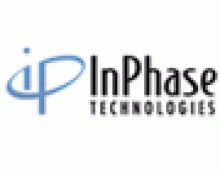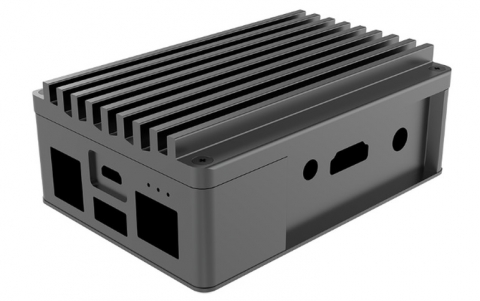
InPhase Technologies Introduces the World's First Holographic Drive Prototype
InPhase Partnerships With Industry and Government Lead to Development of Next-Generation Breakthrough Data Storage Technology
InPhase Technologies today announced a breakthrough in data storage with the world's first prototype of a holographic storage drive. InPhase, the leader in holographic data storage systems and media, has built several prototypes that conclusively demonstrate the dawning of the next phase in digital recording and moves holographic storage from research to commercialization.
The prototype is the foundation for InPhase's family of Tapestry(TM) holographic drives, with data capacities that range from 200 GB to 1.6 TB on a single disk. The completion of the prototype was enabled by InPhase's development of key recording techniques and holographic media, the commercial availability of critical components, strong partnerships with leading storage innovators, and government funding.
"The InPhase prototype drive serves as the mile marker on the path to commercialization of holographic storage. This technology offers the highest density and performance of any optical system and will assume a prominent role in the storage landscape," said Nelson Diaz, president and CEO of InPhase Technologies. "The development of the Tapestry prototype drive was a cooperative effort that successfully demonstrates the strength of corporate and government collaboration in the implementation of breakthrough technologies."
The prototype drive records data into InPhase's patented two-chemistry Tapestry(TM) photopolymer WORM material. The recording material is 1.5 mm thick and is sandwiched between two 130 mm diameter transmissive plastic disk substrates. The National Geospatial-Intelligence Agency's National Technology Alliance program (NTA) partially funded the development of the holographic media and the automation of some of the manufacturing processes. Hitachi Maxell, Ltd., a key investor and development partner of InPhase, designed and developed a new cartridge that provides maximum protection for the light-sensitive recording material, while maintaining the ease of integrating the cartridge into automated libraries. In addition, Maxell is developing high-volume media manufacturing processes.
The prototype arranges more than one million bits of data into a single page, which is recorded with a single flash of a 407 nm laser beam. Multiple pages of data, referred to as a book, are recorded in one spot on the disk providing approximately 12 MB of data in a single book location.
The prototype drive includes all drive subsystems such as the auto load/unload mechanics, servo system, holographic read/write head, data channel and electronics. The media cartridge is loaded and unloaded automatically using a mechanism designed and developed for InPhase by ALPS Electric Co. Ltd., an InPhase investor and development partner.
The servo system, designed and developed by InPhase, regulates both radial and rotational movement of the media and the angle of the reference beam. During a read operation, feedback from the hologram provides information to the servo system to optimize the recovery of the data with the best signal to noise ratio.
The holographic read/write head is the heart of the system, and in the past availability of high quality, yet affordable optical components was an issue. However, the 407 nm blue lasers recently available in other optical devices provide the wavelength required for high capacity holographic storage. CMOS active pixel sensor arrays used in digital cameras are also available, as are spatial light modulators used in digital TVs and projectors. InPhase's industry partners continue to optimize these components for use in holographic storage.
Displaytech, Inc., the leader in ferroelectric liquid crystal on silicon (FLCOS) microdisplays, and InPhase have formed a joint venture funded by a grant from the National Institute of Standards and Technology's Advanced Technology Program (ATP) for the development of a spatial light modulator that will be used in the entire InPhase product family ranging up to 1.6 terabytes on a single 130 mm diameter holographic disk.
The system electronics, data formats, and electronic and logical interfaces in the holographic prototype drive were also developed by InPhase and funded partially by the NTA for the eventual use in geospatial image archive applications.
A discussion of the latest InPhase developments will be held during the "New Developments and Challenges in Content Storage" panel at Storage Visions 2005 held at the Las Vegas Convention center on Wednesday, January 5th.
The prototype is the foundation for InPhase's family of Tapestry(TM) holographic drives, with data capacities that range from 200 GB to 1.6 TB on a single disk. The completion of the prototype was enabled by InPhase's development of key recording techniques and holographic media, the commercial availability of critical components, strong partnerships with leading storage innovators, and government funding.
"The InPhase prototype drive serves as the mile marker on the path to commercialization of holographic storage. This technology offers the highest density and performance of any optical system and will assume a prominent role in the storage landscape," said Nelson Diaz, president and CEO of InPhase Technologies. "The development of the Tapestry prototype drive was a cooperative effort that successfully demonstrates the strength of corporate and government collaboration in the implementation of breakthrough technologies."
The prototype drive records data into InPhase's patented two-chemistry Tapestry(TM) photopolymer WORM material. The recording material is 1.5 mm thick and is sandwiched between two 130 mm diameter transmissive plastic disk substrates. The National Geospatial-Intelligence Agency's National Technology Alliance program (NTA) partially funded the development of the holographic media and the automation of some of the manufacturing processes. Hitachi Maxell, Ltd., a key investor and development partner of InPhase, designed and developed a new cartridge that provides maximum protection for the light-sensitive recording material, while maintaining the ease of integrating the cartridge into automated libraries. In addition, Maxell is developing high-volume media manufacturing processes.
The prototype arranges more than one million bits of data into a single page, which is recorded with a single flash of a 407 nm laser beam. Multiple pages of data, referred to as a book, are recorded in one spot on the disk providing approximately 12 MB of data in a single book location.
The prototype drive includes all drive subsystems such as the auto load/unload mechanics, servo system, holographic read/write head, data channel and electronics. The media cartridge is loaded and unloaded automatically using a mechanism designed and developed for InPhase by ALPS Electric Co. Ltd., an InPhase investor and development partner.
The servo system, designed and developed by InPhase, regulates both radial and rotational movement of the media and the angle of the reference beam. During a read operation, feedback from the hologram provides information to the servo system to optimize the recovery of the data with the best signal to noise ratio.
The holographic read/write head is the heart of the system, and in the past availability of high quality, yet affordable optical components was an issue. However, the 407 nm blue lasers recently available in other optical devices provide the wavelength required for high capacity holographic storage. CMOS active pixel sensor arrays used in digital cameras are also available, as are spatial light modulators used in digital TVs and projectors. InPhase's industry partners continue to optimize these components for use in holographic storage.
Displaytech, Inc., the leader in ferroelectric liquid crystal on silicon (FLCOS) microdisplays, and InPhase have formed a joint venture funded by a grant from the National Institute of Standards and Technology's Advanced Technology Program (ATP) for the development of a spatial light modulator that will be used in the entire InPhase product family ranging up to 1.6 terabytes on a single 130 mm diameter holographic disk.
The system electronics, data formats, and electronic and logical interfaces in the holographic prototype drive were also developed by InPhase and funded partially by the NTA for the eventual use in geospatial image archive applications.
A discussion of the latest InPhase developments will be held during the "New Developments and Challenges in Content Storage" panel at Storage Visions 2005 held at the Las Vegas Convention center on Wednesday, January 5th.

















